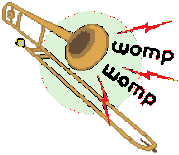You are using an out of date browser. It may not display this or other websites correctly.
You should upgrade or use an alternative browser.
You should upgrade or use an alternative browser.
Why do we have to have daylight savings time?
- Thread starter Della
- Start date
Paladin1950
Still love 50's & 60's music!
- Location
- Mohawk Valley, NY
Baseball has nothing to do with changing time. It has to do with enjoying Spring and warmer days.Says the person with the "go away snow so we can have baseball" signature. If we can only talk about children starving in Africa this board is going to get really small.
The reason I'm so mad about this is that it caused my son to be late for work after a perfect record over 20 years. He doesn't have a whole lot to be proud of, no wife, no children, no house of his own and not the career he planned on back when he was in college with a four point average. All he has is his job and he takes it seriously.
Sorry to bother all you happy people with your extra long sunny days. (and cat videos .)
dilettante
Well-known Member
- Location
- Michigan
Yeah, but shaking your fist and yelling at a cloud gets boring. And after all, isn't that why we are here?People have been squawking and crying about this for years. I think it's so silly to complain. It's just twice a year that you change your clocks. My God, there a lot of more important things to complain about. If New York does away with it, fine. If they don't, who cares? When you think of all of the bad things that happened during the course of a year, you never think about having to change the time on your clocks twice during the year

Old Dummy
Who am I? Why am I here?
- Location
- In the backwoods of NYS
If we left DST year 'round I would be okay with that.
HOWEVER if we had ST during the summer, it would get dark here at 8 PM in June which I would NOT like, and the birds would start singing at 3:30 AM. Who wants that?
HOWEVER if we had ST during the summer, it would get dark here at 8 PM in June which I would NOT like, and the birds would start singing at 3:30 AM. Who wants that?
That Lady in PA
Senior Member
Seriously... thinking about it has been going on for decades.Thinking about doesn't really count. There are 2, Hawaii and Arizona that don't change at this point.
David777
Well-known Member
- Location
- Silicon Valley
So after their 8-f m-f jobs, executives and upper middle class people can play golf and Wall Street retail corporation bean counters can squeeze out even more money from we citizens. One needs to understand, the same result would happen if companies, schools, and government offices where people work simply seasonally shifted their hours during the year so people would go to work earlier and and get off earlier.
But companies, schools, and government offices are not going to shift their working hours so Walter can play golf or Sally after work will have an easier time driving in daylight to a shopping mall. So instead of pressuring companies, schools, and government offices to change shop and office hours, corporation bean counters pressure their politicians and news media to change the subject with bullsh$$ into how the rest of us during summer are going to enjoy more daylight hours after work.
But companies, schools, and government offices are not going to shift their working hours so Walter can play golf or Sally after work will have an easier time driving in daylight to a shopping mall. So instead of pressuring companies, schools, and government offices to change shop and office hours, corporation bean counters pressure their politicians and news media to change the subject with bullsh$$ into how the rest of us during summer are going to enjoy more daylight hours after work.
horseless carriage
Well-known Member
Well done, you know your history. There was strong opposition from farmers, scientists, and others. Farmers needed to follow the sun, not the clock and a clock change would put them out of sync with the non-farming world. Scientists worried about the lack of continuity of data collection, while those who had recently finally achieved a worldwide standard time zone system didn't want to introduce any irregularities."Many think that daylight saving time was conceived to give farmers an extra hour of sunlight to till their fields, but this is a common misconception. In fact, farmers have long been opposed to springing forward and falling back, since it throws off their usual harvesting schedule.
The real reasons for daylight saving are based on energy conservation and a desire to match daylight hours to the times when most people are awake. The idea dates back to 1895 when entomologist George Vernon Hudson unsuccessfully proposed an annual two-hour time shift to the Royal Society of New Zealand.
Ten years later, the British construction magnate William Willett picked up where Hudson left off when he argued that the United Kingdom should adjust their clocks by 80 minutes each spring and fall to give people more time to enjoy daytime recreation. Willett was a tireless advocate of what he called “Summer Time,” but his idea never made it through Parliament."
Why Do We Have Daylight Saving Time? | HISTORY
Yet Willett was relentless in his pursuit of DST (later called summer time). But his repeated attempts to pass a bill in Parliament all failed, and Willett died in 1915, never seeing his idea come to fruition. So, which country was the first to adopt daylight savings time?
Word of Willett's concept had spread around Europe. As the First World War continued, Kaiser Wilhelm's Germany recognised that using Willett's DST would bring more sunlight to the evenings, replacing artificial lighting and saving precious fuel for the war effort. Thus taking the British idea, in 1916 Germany was the first country to adopt DST. Once it did so, Britain and European countries on both sides of the war quickly adopted DST, with the United States following suit on 31 March 1918, after it had entered the war.
After the end of the First World War, many countries, considering DST a wartime measure, discontinued its use. American farmers defeated urban dwellers and President Woodrow Wilson to get DST repealed, returning the US to ‘God's Time’.
When the Second World War began, all combatants on both sides quickly adopted DST to save vital energy resources for the war. The United Kingdom extended summer time to the entire year and later added double summer time (two hours advanced) in the summers. The United States similarly enacted Franklin Roosevelt's year round DST law 40 days after Pearl Harbour was attacked. With the end of the war, some countries abandoned their wartime DST while others continued it into the postwar years.
Michael Z
Senior Member
- Location
- Northern Wisconsin
As a retired person, I am fine either way.
But as a kid, DST was a welcome event that ushered in warmer temps and lots of daylight to play outside
And we missed church too yesterday!
But as a kid, DST was a welcome event that ushered in warmer temps and lots of daylight to play outside
And we missed church too yesterday!
No one is getting any extra sun and the days are not any longer! It has zero effect on the solar system! Those of you who wanted more or less sunshine during your waking hours could have simply got up earlier or later instead of making the whole world change for your particular tastes.
yes I realise that and I'm sure everybody else does too - that's why I said "the extra hour of sunlight in the evening" and unfortunately like most people who go to work, school etc, I can't simply just finish work at a different time - so the daylight hours after work cant change by me changing my routine.
here in the state of Australia I live in, it wasn't just to suit my particular tastes - it was what majority wanted. That isnt me assuming other people want it - it went t o a referendum and was voted in.
well there would be little point having it in Hawaii - or anywhere that sits about equator level as hours of sunlight are almost same all year round.Thinking about doesn't really count. There are 2, Hawaii and Arizona that don't change at this point.
Tommy
Senior Member
- Location
- New Hampshire
Over the course of my working life I've variously had to work swing shifts, be "on call" 24/7, and participate in "dark o'clock" video conferences with colleagues and customers in other parts of the world. A simple on hour time shift twice a year doesn't bother me at all. 
DGM
Member
- Location
- Willow Spring NC
Years ago Indiana was in the Central Time Zone. Then, they thought it'd be better to be on the same time as New York City so it aligned with the Eastern Time Zone. Now, with Daylight Savings Time, Indiana has daylight almost 11PM! That's nuts.
That Lady in PA
Senior Member
Not the whole state.... it is one of the states that have TWO time zones!Years ago Indiana was in the Central Time Zone. Then, they thought it'd be better to be on the same time as New York City so it aligned with the Eastern Time Zone. Now, with Daylight Savings Time, Indiana has daylight almost 11PM! That's nuts.
Nathan
SF VIP
- Location
- High Desert- Calif.
Time is just a human construct (apologies to the theoretical physists), I'm not a clock watcher...I just don't like having to reset household clocks and a few analog devices. Just leave the time setting one way or another, quit changing it!



